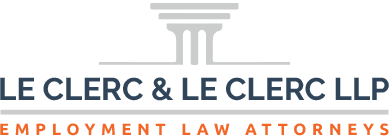California has one of the best social safety nets in the nation. One benefit many workers are unaware of is the California Paid Family Leave (PFL) program, which is specifically designed to provide workers with income if they need to take time off work to care for a family member. This program provides invaluable support for people who need to step away from work responsibilities to care for loved ones.
Unfortunately, many employees are hesitant to take time off, even with pay, because they worry the time away may impact their employment. However, it is illegal for employers to retaliate against workers who have taken leave or received government benefits. Here’s what you need to know about PFL in California and what to do if your employer penalizes you for taking leave.
California’s Paid Family Leave Program
Paid Family Leave is managed by the California Employment Development Department as part of the State Disability Insurance (SDI) program. While PFL is not the same as disability insurance, it has many similarities. The benefits are funded by SDI contributions deducted from W-2 employees’ paychecks and contributions to the Disability Insurance Elective Coverage (DIEC) program.
These funds provide eligible workers with up to eight weeks of partial wage replacement if they need to take time off to care for a family member. PFL currently covers 60-70% of your weekly pay based on your highest quarterly income in the past year, up to a limit of $1,620 per week. These funds are intended to help you cover bills and maintain your quality of life while you take care of your loved ones.
PFL only applies if you take time off to care for someone else. If you need to take time off work because you are injured or ill, you must apply for disability insurance coverage instead.
Eligibility for Paid Family Leave
If you receive a W-2 in California, you are likely eligible for PFL. As long as you have received at least $300 in pay from which SDI has been deducted during your “base period,” you have contributed to the program and could receive benefits. Your base period consists of 12 months, beginning 18 months prior to when your time off begins. For example, if your leave starts on February 1st, 2023, your base period would be November 2021 to October 2022.
In addition to contributing to SDI through your paycheck, you must also meet the following criteria to be eligible:
- You are employed or actively looking for work when you need to care for someone.
- You are unable to do your customary work.
- You are:
- Bonding with a new child within one year of their birth, adoption, or foster placement; OR
- Providing care for a seriously ill family member whose illness incapacitates that person to the point that they require assistance with performing regular daily activities or attending subsequent treatment or inpatient care; OR
- Participating in events related to a family member’s military deployment to a foreign country.
- You can provide supporting documentation regarding the medical needs of the family member.
How to Take Paid Leave
If you meet the requirements above, you’re eligible to receive benefits from the state while you take time off work to help your family. To request wage replacement benefits, you apply directly through the state SDI portal.
However, you cannot receive PFL if you are currently receiving wages. You must take time off from your job if you’re currently employed. If you currently have a job and want paid family leave, the best solution is to request unpaid time off from your employer, then apply for PFL through the state.
The requirements for requesting PFL overlap with the requirements for unpaid leave under the federal Family Medical Leave Act (FMLA) and the California Family Rights Act (CFRA). These laws require covered employers to provide workers with 12 weeks of unpaid leave if they have worked at least 1250 hours for them in the past 12 months.
During CFRA leave, your employer must continue to provide your benefits but will not pay you. They must also allow you to return to your job at the same hours, location, rate of pay, and benefits when you return to work. They may not retaliate against you in any way for requesting this time off. If they do, you may have grounds to take legal action against them.
What to Do If Your Family Leave Impacts Your Employment in California
If you are eligible for both CFRA and PFL programs, you have every right to take time off work to care for your family. However, unscrupulous employers may attempt to discourage you from taking this time off or retaliate against you for inconveniencing them. Examples of this retaliation include:
- Refusing to grant you unpaid CFRA time off despite meeting the eligibility requirements
- Threatening you with adverse employment action such as termination or demotion for taking leave
- Firing you, refusing to promote you, withholding raises offered to other employees or otherwise taking adverse action against you during or after your leave
- Refusing to maintain your benefits during your time off
- Deducting PFL from your benefits during or after your time away
All of these actions are illegal, but they still occur. If you have been retaliated against for taking protected family leave in California, you have grounds to take legal action against your employer. At Le Clerc & Le Clerc LLP, we are dedicated to helping clients like you stand up for your right to take family leave in California. We can help you address workplace discrimination and retaliation and seek justice and compensation for your losses. Learn more about how we can help you by scheduling your consultation today.
